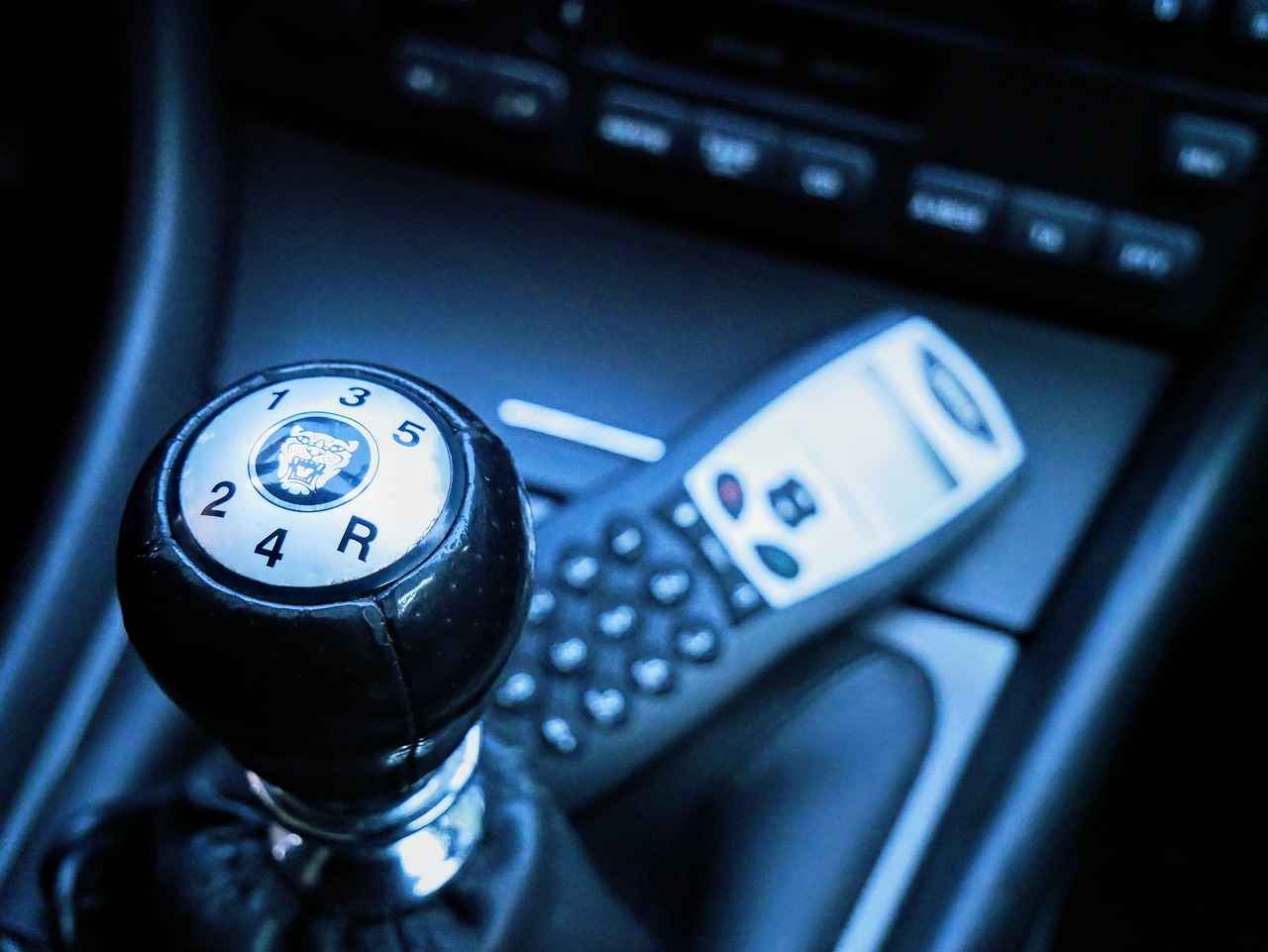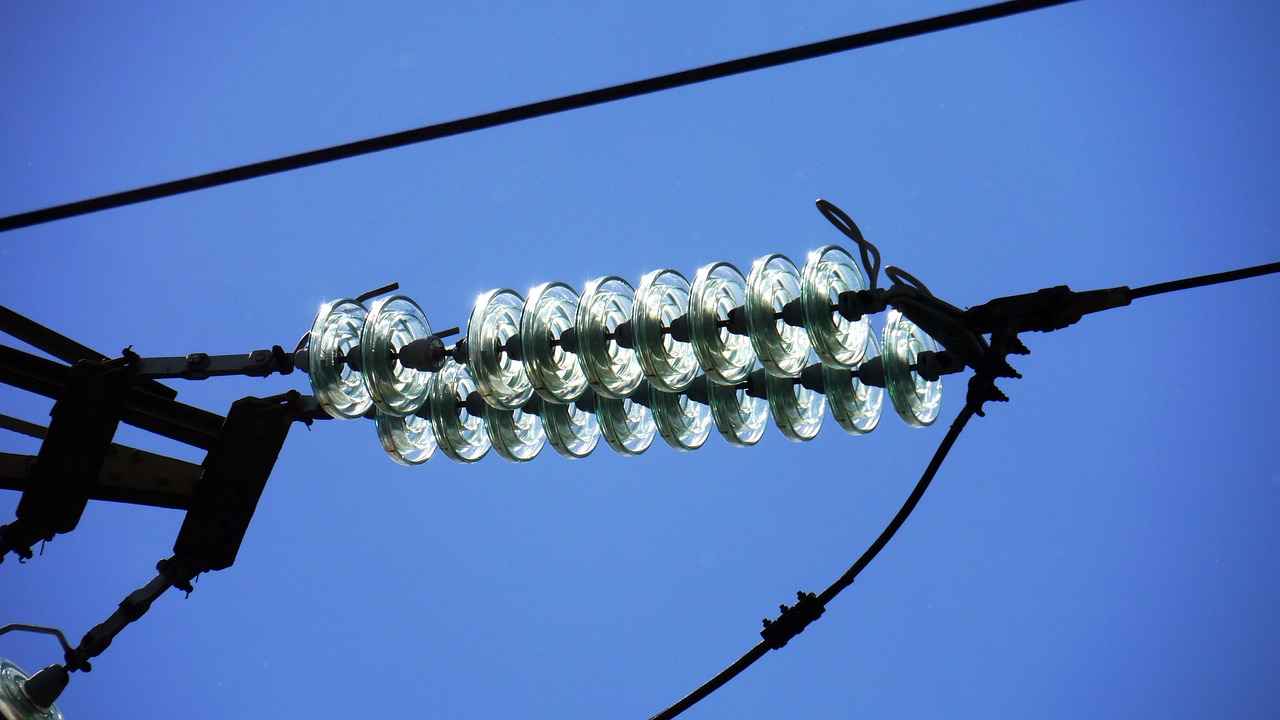This article provides a step-by-step guide on checking the transmission fluid in a Honda Accord, ensuring your vehicle runs smoothly and efficiently. Maintaining the right transmission fluid level is crucial for the overall performance of your vehicle. Neglecting this important maintenance task can lead to significant issues down the line.
Understanding the significance of transmission fluid can prevent costly repairs and maintain vehicle performance. Transmission fluid lubricates the moving parts of your vehicle’s transmission, ensuring everything operates smoothly. Regular checks can help identify problems early, allowing for timely interventions that can prolong the lifespan of your transmission.
- Transmission dipstick
- Funnel
- Jack (for better access)
- Clean rag or paper towel
Having the right tools on hand is essential for an accurate check. This will make the process smoother and more efficient.
Locating the dipstick is crucial for checking fluid levels. In most Honda Accords, it is found near the back of the engine bay, typically marked with a bright-colored handle for easy identification. Referencing your vehicle’s manual can provide specific details for your model.
Preparing your vehicle ensures safety and accuracy. Park on a level surface, engage the parking brake, and let the engine run until it reaches operating temperature. This allows the fluid to circulate and provide a more accurate reading.
Checking the fluid level involves removing the dipstick and wiping it clean. Reinsert it, then pull it out again to assess the fluid level against the marked indicators. The fluid should be within the designated range on the dipstick. If it’s low, you will need to add more.
Evaluating the condition of the fluid is just as important as checking the level. Look for color, clarity, and any burnt smell, which can indicate potential issues. Healthy transmission fluid is typically a bright red color and should be clear. If it appears dark or has a burnt odor, it may need to be changed.
If the fluid level is low, adding transmission fluid is straightforward. Use a funnel to pour the appropriate type of fluid into the dipstick tube, ensuring not to overfill. Always refer to your owner’s manual for the correct fluid specifications.
Using the correct type of transmission fluid is vital for optimal performance. Check your owner’s manual for specifications, typically Honda ATF-Z1 or DW-1 for most models. Using the wrong type can lead to transmission problems.
Regular checks can prevent problems. It’s advisable to check transmission fluid every 30,000 miles or as recommended in your vehicle’s maintenance schedule. Keeping a log of your checks can help you stay on top of this important maintenance task.
Recognizing symptoms of low fluid can prevent serious damage. Common signs include slipping gears, delayed shifting, and unusual noises while driving. If you experience any of these symptoms, it’s crucial to check your transmission fluid immediately.
While some vehicles allow checking with the engine off, Honda Accords typically require the engine to be running for an accurate reading of the fluid level. This is because the fluid needs to be circulating to provide a precise measurement.
If you notice persistent problems despite checking fluid levels, it’s time to consult a professional. Early intervention can save you from extensive repairs down the line, ensuring your Honda Accord remains in optimal condition.

Why is Checking Transmission Fluid Important?
When it comes to maintaining your vehicle, understanding the importance of transmission fluid cannot be overstated. This vital fluid plays a crucial role in ensuring that your vehicle’s transmission operates smoothly and efficiently. Regularly checking your transmission fluid can help you avoid costly repairs and keep your vehicle performing at its best.
The transmission is one of the most complex components of your vehicle, and it requires proper lubrication to function correctly. Transmission fluid serves several key purposes, including:
- Lubrication: It reduces friction between the moving parts within the transmission, preventing wear and tear.
- Hydraulic Function: The fluid acts as a hydraulic fluid, enabling the transmission to shift gears smoothly.
- Cooling: It helps dissipate heat generated by the transmission, preventing overheating and damage.
Over time, transmission fluid can degrade due to heat and contamination. This can lead to poor transmission performance, including slipping gears, delayed shifting, and even complete transmission failure. By regularly checking the fluid level and condition, you can identify potential issues before they escalate into more serious problems.
Regular checks of your transmission fluid can significantly extend the lifespan of your transmission. Here’s how:
- Early Detection: Spotting low fluid levels or contamination early allows for timely intervention.
- Maintaining Optimal Levels: Keeping the fluid at the recommended level ensures that all components are adequately lubricated.
- Improved Performance: Clean, high-quality fluid enhances the overall performance of the transmission.
Many experts recommend checking your transmission fluid every 30,000 miles or as specified in your vehicle’s maintenance schedule. This simple task can save you from the hassle and expense of major repairs down the line.
Neglecting to check your transmission fluid can lead to several warning signs that indicate trouble:
- Unusual Noises: Grinding or whining sounds when shifting gears can signal low fluid levels.
- Delayed Shifting: If your vehicle hesitates before shifting, it’s a sign that the transmission may not be receiving enough fluid.
- Fluid Leaks: Puddles of reddish fluid under your vehicle indicate a leak that needs immediate attention.
By being aware of these signs, you can take proactive measures to check your transmission fluid and maintain your vehicle’s health.
In summary, understanding the significance of transmission fluid and conducting regular checks is essential for maintaining your vehicle’s performance. Not only does it prevent costly repairs, but it also ensures that your transmission operates efficiently, prolonging its lifespan. Make checking your transmission fluid a part of your regular vehicle maintenance routine for optimal results.

What Tools Do You Need to Check Transmission Fluid?
When it comes to maintaining your vehicle, checking the transmission fluid is a crucial task that should not be overlooked. This process ensures that your transmission operates smoothly and efficiently, thereby prolonging the lifespan of your vehicle. However, before you can check the transmission fluid, you need to gather the right tools. Below, we will explore the essential tools required for this important task.
Gathering the right tools is essential for an accurate check. Here is a list of the necessary items:
- Dipstick: This is the primary tool you will need. The dipstick allows you to measure the transmission fluid level accurately. It usually has markings indicating the optimal fluid levels.
- Funnel: A funnel is helpful for adding fluid without spilling. This ensures that you don’t waste any fluid and keep your workspace clean.
- Jack (optional): Depending on your Honda Accord model, you may need a jack to elevate the vehicle for better access to the transmission. This is particularly useful if the dipstick is located in a hard-to-reach area.
- Rags or Paper Towels: These are useful for cleaning the dipstick and wiping up any spills that may occur during the checking process.
- Transmission Fluid: Make sure to have the appropriate type of transmission fluid on hand in case you need to top it off. Refer to your owner’s manual for the correct specifications.
Having these tools ready will make the process of checking your transmission fluid much smoother and more efficient. It’s important to remember that using the correct tools not only simplifies the task but also helps prevent any potential damage to your vehicle.
In addition to the tools mentioned above, it is advisable to have a flashlight handy. This will help you see clearly in the engine bay, especially in low-light conditions, allowing you to locate the dipstick and assess the fluid level accurately.
Before you start checking the fluid, ensure that your vehicle is parked on a level surface. This is essential for getting an accurate reading of the fluid level. Engaging the parking brake is also a good safety measure to prevent any unintended movement while you are working under the hood.
In summary, gathering the right tools is crucial for effectively checking the transmission fluid in your Honda Accord. By ensuring you have a dipstick, funnel, jack (if needed), rags, and the appropriate transmission fluid, you set yourself up for success in maintaining your vehicle’s performance. Regular checks can save you from costly repairs and keep your transmission running smoothly for years to come.

Where is the Transmission Fluid Dipstick Located?
When it comes to maintaining your Honda Accord, understanding where the transmission fluid dipstick is located is essential. This component plays a vital role in checking the fluid levels, which is crucial for the optimal operation of your vehicle’s transmission system.
Locating the dipstick is crucial for checking fluid levels. In most Honda Accords, it can be found near the back of the engine bay, typically marked with a bright-colored handle for easy identification. The dipstick is often positioned vertically, making it accessible for drivers who want to perform routine checks.
To ensure you can easily find the dipstick, here are some steps you can follow:
- Open the Hood: Start by securing your vehicle and opening the hood. Make sure the engine is cool to avoid any burns.
- Locate the Engine Bay: Stand in front of your vehicle and look towards the back of the engine compartment. The dipstick should be within reach.
- Identify the Handle: Look for a brightly colored handle, often yellow or red, which will help you differentiate it from other components.
It’s worth noting that while most Honda Accords have a similar design, variations may occur depending on the model year. Therefore, consulting your owner’s manual can provide specific details for your vehicle.
If you’re having trouble locating the dipstick, consider these tips:
1. Check for any obstructions or covers that might be hiding the dipstick.2. Ensure the vehicle is parked on a level surface for accurate readings.3. If necessary, ask for assistance from a knowledgeable friend or a mechanic.
Once you have located the dipstick, you can proceed to check the transmission fluid level. This process involves removing the dipstick, wiping it clean, reinserting it, and then pulling it out again to assess the fluid level. It’s important to ensure that the fluid is at the correct level for optimal performance.
In summary, knowing where to find the transmission fluid dipstick in your Honda Accord is the first step towards maintaining your vehicle’s transmission health. Regular checks can help prevent potential issues and ensure that your car runs smoothly. If you’re unsure or encounter any difficulties, don’t hesitate to seek professional assistance.

How to Prepare Your Honda Accord for Checking Fluid?
Preparing your Honda Accord for checking the transmission fluid is a critical step that ensures both safety and accuracy. Proper preparation not only protects you but also helps in getting an accurate reading of the fluid level, which is essential for the vehicle’s performance. Here’s how to prepare your vehicle effectively:
- Park on a Level Surface: Before you start, make sure your Honda Accord is parked on a flat and level surface. This is crucial because parking on an incline can lead to inaccurate fluid level readings.
- Engage the Parking Brake: Always engage the parking brake to prevent any accidental movement of the vehicle while you are working on it. This is a simple yet effective safety measure.
- Warm Up the Engine: Allow the engine to run until it reaches its operating temperature. This step is important because transmission fluid expands when heated, providing a more accurate reading when you check the level.
- Check the Surroundings: Before you start, ensure that the area around your vehicle is clear of any obstacles or hazards. This will help you move freely and safely while performing the check.
- Gather Necessary Tools: It’s important to have all the tools you need within reach. You will typically require a dipstick, a funnel, and possibly a jack if you need better access to the transmission area.
Once you have completed these preparations, you can proceed to check the transmission fluid level with confidence. Remember, the condition of the transmission fluid is just as important as the level itself. Regular monitoring can help you catch potential issues early, preventing costly repairs down the line.
Additionally, if you notice any unusual sounds or shifting issues while driving, it may indicate a problem with the transmission fluid. In such cases, it’s advisable to check the fluid condition and level more frequently.
In summary, taking the time to prepare your Honda Accord properly for checking the transmission fluid is essential. By following these steps, you can ensure that you are working safely and accurately, ultimately contributing to the longevity and efficiency of your vehicle.

How to Check the Transmission Fluid Level?
Checking the transmission fluid level in your Honda Accord is a crucial maintenance task that ensures the smooth operation of your vehicle’s transmission system. Regular checks can help you identify potential issues before they escalate into costly repairs. Here’s a detailed guide on how to accurately check the transmission fluid level.
To begin with, ensure your vehicle is parked on a level surface and the engine is running. This is essential for obtaining an accurate reading of the fluid level. Once you’re ready, follow these steps:
- Locate the Dipstick: The transmission fluid dipstick is usually located near the back of the engine bay. It is often marked with a brightly colored handle, making it easily identifiable.
- Remove the Dipstick: Carefully pull the dipstick out of its tube. Be cautious, as the engine and transmission components may be hot.
- Wipe It Clean: Use a clean rag or paper towel to wipe the dipstick thoroughly. This step is important to remove any debris or old fluid that may affect your reading.
- Reinsert the Dipstick: Insert the dipstick back into its tube fully. This ensures that the fluid can return to the dipstick for an accurate measurement.
- Check the Fluid Level: Pull the dipstick out again and observe the fluid level against the marked indicators on the dipstick. The fluid should ideally be within the “full” and “add” marks. If it’s below the “add” mark, you will need to add more transmission fluid.
In addition to checking the fluid level, it is equally important to assess the condition of the transmission fluid. Look for the following:
- Color: Healthy transmission fluid is typically a clear, bright red. If the fluid appears dark brown or black, it may be burnt and require replacement.
- Clarity: The fluid should be transparent. Cloudiness can indicate contamination.
- Odor: A burnt smell is a warning sign that the fluid may be overheating, which could lead to serious transmission problems.
If you find that the fluid level is low, you can easily add more fluid. Here’s how:
- Choose the Right Fluid: Consult your owner’s manual for the recommended transmission fluid type, typically Honda ATF-Z1 or DW-1.
- Use a Funnel: Insert a funnel into the dipstick tube to prevent spills.
- Add Fluid Gradually: Pour the fluid slowly, checking the level frequently to avoid overfilling.
Maintaining the proper transmission fluid level is essential for the longevity and performance of your Honda Accord. It is advisable to check the fluid level every 30,000 miles or as specified in your vehicle’s maintenance schedule. Regular checks not only help in identifying potential issues early but also ensure that your transmission operates smoothly, enhancing your driving experience.
By following these steps, you can ensure that your Honda Accord’s transmission system remains in optimal condition, providing you with a reliable and enjoyable driving experience.

What Should You Look for in Transmission Fluid Condition?
When it comes to maintaining your Honda Accord, evaluating the condition of the transmission fluid is crucial. Not only should you check the fluid level, but you must also assess its quality to ensure your vehicle operates optimally. Here’s what to look for when examining your transmission fluid.
The color of the transmission fluid can tell you a lot about its condition. Healthy transmission fluid typically has a bright red or pink hue. If you notice that the fluid has turned a brown or black color, it may indicate that the fluid is old and has started to break down. This can lead to inadequate lubrication and increased wear on the transmission components.
Next, check the clarity of the fluid. Transmission fluid should be clear and free of debris. If you see any cloudiness or particles floating in the fluid, this could be a sign of contamination or internal wear within the transmission. Contaminated fluid can lead to serious transmission issues if not addressed promptly.
One of the most important indicators of transmission fluid condition is its smell. Healthy transmission fluid has a slightly sweet odor. If you detect a burnt smell, this is a strong indication that the fluid has overheated and is breaking down. Overheating can cause significant damage to the transmission, leading to costly repairs.
Regularly checking the condition of your transmission fluid can prevent expensive repairs down the line. By identifying issues early, you can take the necessary steps to address them before they escalate. Keeping your transmission fluid in good condition ensures that your vehicle runs smoothly and efficiently, prolonging its lifespan and enhancing performance.
It is advisable to check the transmission fluid condition every 30,000 miles or as recommended in your vehicle’s maintenance schedule. Regular checks will help you stay ahead of potential problems and ensure that your Honda Accord remains in top shape.
If you find that the transmission fluid is discolored, cloudy, or has a burnt smell, it is essential to take action. You may need to change the fluid or consult a professional mechanic for a thorough inspection. Ignoring these signs can lead to more severe transmission issues and costly repairs.
In summary, evaluating the condition of your transmission fluid is just as important as checking its level. By paying attention to color, clarity, and smell, you can identify potential issues early and keep your Honda Accord running smoothly. Regular maintenance and checks will save you time and money in the long run.

How to Add Transmission Fluid if Necessary?
When it comes to maintaining your Honda Accord, ensuring the transmission fluid is at the proper level is essential for optimal performance. If you find that the fluid level is low, adding transmission fluid is a simple process that can be done at home with minimal tools. Here’s a detailed guide on how to do it correctly.
- Transmission Fluid: Always use the type specified in your owner’s manual, typically Honda ATF-Z1 or DW-1.
- Funnel: A funnel will help you pour the fluid without spilling.
- Cloth or Rag: For cleaning spills and wiping the dipstick.
Adding transmission fluid is a straightforward task. Follow these steps to ensure you do it correctly:
- Check the Fluid Level: Before adding fluid, confirm that the level is indeed low by checking the dipstick.
- Prepare Your Vehicle: Park your Honda Accord on a level surface and engage the parking brake. It’s best to check the fluid when the engine is warm.
- Locate the Dipstick Tube: Find the dipstick tube, which is generally located near the back of the engine bay.
- Remove the Dipstick: Pull out the dipstick and wipe it clean with a cloth. This will give you a more accurate reading.
- Add Fluid: Using a funnel, carefully pour the appropriate transmission fluid into the dipstick tube. Be cautious not to overfill; add a little at a time and recheck the level.
- Recheck the Fluid Level: After adding fluid, reinsert the dipstick, pull it out again, and check the level against the markings.
- Overfilling: Adding too much fluid can cause foaming and lead to transmission damage.
- Using the Wrong Fluid: Always use the transmission fluid recommended for your specific model.
- Neglecting to Check for Leaks: After adding fluid, monitor for any signs of leaks under the vehicle.
If you frequently find yourself needing to add transmission fluid or notice any unusual behavior in your vehicle, such as slipping gears or delayed shifting, it may be time to consult a professional. Early diagnosis can prevent more severe issues down the line.
In conclusion, ensuring your Honda Accord has the right amount of transmission fluid is crucial for its longevity and performance. By following these simple steps, you can easily add fluid when necessary and keep your vehicle running smoothly. Remember, regular maintenance checks can help you avoid costly repairs in the future.

What Type of Transmission Fluid Does a Honda Accord Use?
When it comes to maintaining your Honda Accord, one of the most crucial aspects is ensuring that you use the correct type of transmission fluid. The right fluid not only enhances the performance of your vehicle but also protects the transmission from wear and tear. In this section, we will explore the types of transmission fluid suitable for Honda Accords, why they matter, and how to find the right specifications.
Using the correct transmission fluid is vital for optimal performance and longevity of your vehicle’s transmission system. The right fluid helps in:
- Lubrication: It reduces friction between moving parts, ensuring smooth operation.
- Temperature Regulation: It helps maintain an appropriate operating temperature, preventing overheating.
- Seal Protection: The right fluid helps in keeping seals and gaskets in good condition, preventing leaks.
For most Honda Accord models, the recommended transmission fluids are Honda ATF-Z1 or DW-1. These fluids are specifically formulated to meet the requirements of Honda’s transmission systems. Always refer to your owner’s manual for the exact specifications, as using an incorrect fluid can lead to serious issues.
Your owner’s manual is your best friend when it comes to vehicle maintenance. To find the correct transmission fluid type:
- Locate the maintenance section of the manual.
- Look for the subsection on transmission fluid.
- Note the recommended fluid type and any specific brands mentioned.
Using the wrong transmission fluid can result in:
- Poor Transmission Performance: This can lead to slipping gears or delayed shifts.
- Increased Wear: Components may wear out faster, leading to costly repairs.
- Overheating: Inadequate lubrication can cause the transmission to overheat.
It is generally not advisable to mix different types of transmission fluids. Mixing can lead to chemical reactions that degrade the fluid’s performance and compromise the transmission’s health. Always drain the old fluid completely before adding new fluid of the same type.
If you find that your transmission fluid is low, follow these steps:
- Ensure your vehicle is parked on a level surface.
- Use a funnel to add the recommended type of transmission fluid through the dipstick tube.
- Check the fluid level periodically to avoid overfilling.
It’s important to adhere to the maintenance schedule outlined in your owner’s manual. Typically, it’s recommended to change the transmission fluid every 30,000 to 60,000 miles, but this can vary based on driving conditions and habits.
In summary, ensuring that you use the correct type of transmission fluid for your Honda Accord is essential for maintaining its performance and longevity. Regular checks and adherence to manufacturer specifications can help you avoid costly repairs and keep your vehicle running smoothly.

How Often Should You Check Transmission Fluid?
Maintaining your vehicle’s transmission system is crucial for ensuring its longevity and optimal performance. One of the simplest yet most effective ways to do this is by regularly checking the transmission fluid. This article delves into the importance of monitoring your transmission fluid levels, how frequently you should perform this check, and the potential consequences of neglecting this vital maintenance task.
Transmission fluid plays a critical role in lubricating the moving parts of your vehicle’s transmission, allowing for smooth gear shifts and optimal performance. Over time, the fluid can degrade due to heat and contamination, leading to increased friction and potentially severe damage. Regular checks can help identify issues early, preventing costly repairs and ensuring your car runs efficiently.
It is generally advisable to check your transmission fluid every 30,000 miles or as specified in your vehicle’s maintenance schedule. However, certain driving conditions may necessitate more frequent checks. If you often drive in heavy traffic, tow heavy loads, or operate your vehicle in extreme temperatures, consider checking the fluid every 15,000 to 20,000 miles.
- Slipping Gears: If you notice your car unexpectedly slipping out of gear, it might indicate low transmission fluid levels.
- Delayed Shifting: A delay in shifting gears can also be a sign of insufficient fluid.
- Unusual Noises: Grinding or clunking sounds while shifting can suggest that the fluid is low or contaminated.
- Overheating: If your transmission overheats, it could be due to inadequate lubrication from low fluid levels.
To check your transmission fluid, follow these steps:
- Start your vehicle and let it run until it reaches operating temperature.
- Locate the transmission fluid dipstick, usually found near the back of the engine bay.
- Remove the dipstick, wipe it clean, and reinsert it fully.
- Pull it out again to check the fluid level against the marked indicators.
- Inspect the fluid’s color and smell; it should be a bright red and have a sweet smell. Dark or burnt fluid indicates it needs to be changed.
Neglecting to check your transmission fluid can lead to serious issues. Low fluid levels can cause the transmission to overheat, leading to extensive damage. In severe cases, it may result in complete transmission failure, which can be extremely costly to repair or replace. Therefore, regular checks are not just a recommendation; they are a necessity for maintaining the health of your vehicle.
If you encounter any issues while checking your transmission fluid or if you notice any of the warning signs mentioned earlier, it’s wise to consult a professional mechanic. They can provide a thorough inspection and recommend necessary repairs or fluid changes.
In summary, regularly checking your transmission fluid is a simple yet effective way to ensure your vehicle remains in top condition. By adhering to the recommended intervals and staying vigilant for any signs of trouble, you can prevent costly repairs and maintain your vehicle’s performance.

What Are Common Signs of Low Transmission Fluid?
Understanding the health of your vehicle’s transmission is crucial for maintaining its performance and longevity. One of the most significant aspects of transmission maintenance is ensuring that the fluid levels are adequate. Low transmission fluid can lead to a variety of problems, some of which can be quite serious. Therefore, recognizing the common signs of low transmission fluid is essential for every car owner.
Being aware of the symptoms that indicate low transmission fluid can help you take action before more severe damage occurs. Here are some of the most prevalent signs to watch out for:
- Slipping Gears: If your vehicle unexpectedly changes gears or has difficulty staying in gear, this could be a sign that the transmission fluid is low. This symptom can lead to more significant issues if not addressed promptly.
- Delayed Shifting: A noticeable delay when shifting from park to drive or reverse can indicate insufficient transmission fluid. This delay can affect your vehicle’s responsiveness and overall driving experience.
- Unusual Noises: If you hear grinding, whining, or clunking noises while driving, it may be a sign of low fluid levels. These sounds often indicate that the transmission components are not being adequately lubricated.
- Overheating: Transmission fluid helps to cool the transmission. If the fluid is low, it may not be able to perform this function effectively, leading to overheating and potential damage.
- Fluid Leaks: If you notice puddles of reddish-brown fluid under your vehicle, it could signify a leak. Low fluid levels can result from a leak, and addressing this issue is crucial to prevent further complications.
- Warning Lights: Many modern vehicles are equipped with warning systems that alert drivers to potential issues. If you see a transmission warning light on your dashboard, it’s essential to check the fluid levels as soon as possible.
Recognizing these signs early can save you from costly repairs and extensive downtime. If you experience any of these symptoms, it’s advisable to check your transmission fluid level immediately.
Ignoring the signs of low transmission fluid can lead to severe damage to your vehicle’s transmission system. The transmission relies on fluid for lubrication and cooling, and without adequate levels, friction increases, leading to wear and tear. This can result in a complete transmission failure, which is often much more expensive to repair than simply topping off the fluid.
To check your transmission fluid levels, you will need to locate the dipstick, typically found near the back of the engine bay. With the engine running and the vehicle parked on a level surface, remove the dipstick, wipe it clean, and reinsert it. Pull it out again to check the fluid level against the marked indicators. Ensure the fluid is a bright red color and free of debris.
In conclusion, being proactive about your vehicle’s transmission fluid can prevent serious damage and ensure a smooth driving experience. Regular checks and awareness of the signs of low fluid can keep your transmission functioning optimally.

Can You Check Transmission Fluid with the Engine Off?
When it comes to maintaining your vehicle, checking the transmission fluid is a crucial step that should not be overlooked. This fluid plays a vital role in ensuring that your transmission operates smoothly and efficiently. For many vehicle owners, a common question arises: In this article, we will explore this question in detail, specifically in the context of the Honda Accord.
Transmission fluid not only lubricates the moving parts within the transmission but also helps in cooling and cleaning it. Regular checks can prevent costly repairs and enhance your vehicle’s performance. A well-maintained transmission system can significantly prolong the lifespan of your vehicle.
In the context of the Honda Accord, checking the transmission fluid with the engine off is not recommended. Unlike some vehicles that allow for fluid level checks when the engine is off, Honda Accords typically require the engine to be running to provide an accurate reading of the fluid level. This is because the fluid circulates through the system when the engine is operational, giving a true indication of the fluid level.
- Start the Engine: Begin by starting your vehicle and allowing it to reach operating temperature. This ensures that the transmission fluid is warm and has circulated properly.
- Locate the Dipstick: Open the hood and find the transmission fluid dipstick, usually located near the back of the engine bay. It is often marked with a bright-colored handle for easy identification.
- Check the Fluid Level: With the engine running, remove the dipstick and wipe it clean. Reinsert it fully, then pull it out again to check the fluid level against the marked indicators on the dipstick.
If you notice any signs of low transmission fluid, such as slipping gears, delayed shifting, or unusual noises while driving, it is essential to check the fluid level immediately. Ignoring these symptoms can lead to serious transmission issues.
In summary, always check the transmission fluid in your Honda Accord with the engine running to ensure an accurate reading. Regular checks not only help maintain optimal performance but can also save you from costly repairs down the line. If you are ever in doubt about the condition of your transmission fluid or how to check it, consulting a professional is always a wise choice.

When to Seek Professional Help for Transmission Issues?
Understanding when to seek professional help for transmission issues is crucial for maintaining the health of your vehicle. Transmission problems can escalate quickly, leading to more severe and costly repairs. Therefore, recognizing the signs early can save you time and money.
There are several warning signs that indicate it might be time to consult a professional:
- Slipping Gears: If your vehicle unexpectedly changes gears or seems to lose power, this could indicate a transmission issue.
- Delayed Shifting: A noticeable delay when shifting from park to drive or reverse can signal a problem.
- Unusual Noises: Grinding, clunking, or whining sounds while shifting gears can be a sign of transmission trouble.
- Fluid Leaks: Any signs of red or brown fluid under your vehicle should prompt an immediate inspection.
- Warning Lights: If your dashboard displays a transmission warning light, don’t ignore it.
Addressing transmission issues early can prevent minor problems from becoming major ones. For instance, a small fluid leak can lead to low fluid levels, causing overheating and potential failure of the transmission. By seeking help promptly, you can avoid extensive repairs that could have been mitigated.
When you take your vehicle to a professional, they will conduct a thorough inspection. This may include:
- Fluid Analysis: Checking the quality and level of the transmission fluid.
- Diagnostic Testing: Using specialized equipment to identify any electronic or mechanical issues.
- Visual Inspection: Examining the transmission for any visible signs of wear or damage.
Regular maintenance, including fluid checks and changes, can significantly reduce the risk of transmission problems. Following your vehicle’s maintenance schedule is essential. For Honda Accords, it’s advisable to check the transmission fluid every 30,000 miles and change it as recommended.
If you notice any of the signs mentioned earlier, don’t hesitate to consult a professional. Early intervention can save you from extensive repairs down the line. A skilled technician can provide a detailed diagnosis and recommend the best course of action.
In conclusion, being proactive about your Honda Accord’s transmission health can lead to a smoother driving experience and prevent costly repairs. Always pay attention to your vehicle’s performance and address any concerns promptly.
Frequently Asked Questions
- How often should I check my Honda Accord’s transmission fluid?
It’s best to check your transmission fluid every 30,000 miles or as recommended in your maintenance schedule. Regular checks help catch potential issues early!
- What are the signs that my transmission fluid is low?
Look out for symptoms like slipping gears, delayed shifting, or unusual noises while driving. These could be indicators that your transmission fluid needs attention.
- Can I check the transmission fluid with the engine off?
For Honda Accords, it’s recommended to check the fluid level with the engine running. This ensures an accurate reading of the fluid level.
- What type of transmission fluid should I use for my Honda Accord?
Most Honda Accords require Honda ATF-Z1 or DW-1 transmission fluid. Always consult your owner’s manual to confirm the right type for your specific model!
- What should I do if I notice burnt smell in my transmission fluid?
A burnt smell can indicate serious issues. If you detect this, it’s crucial to consult a professional mechanic to prevent further damage to your transmission.



